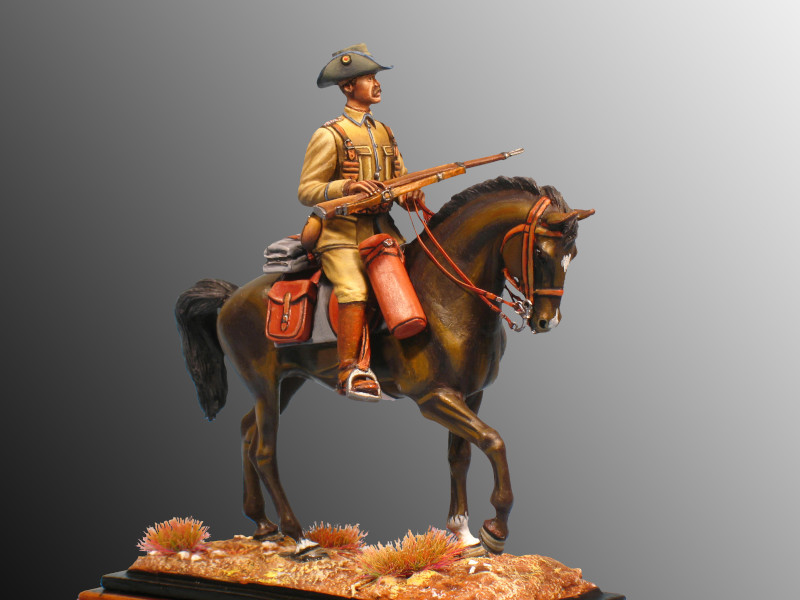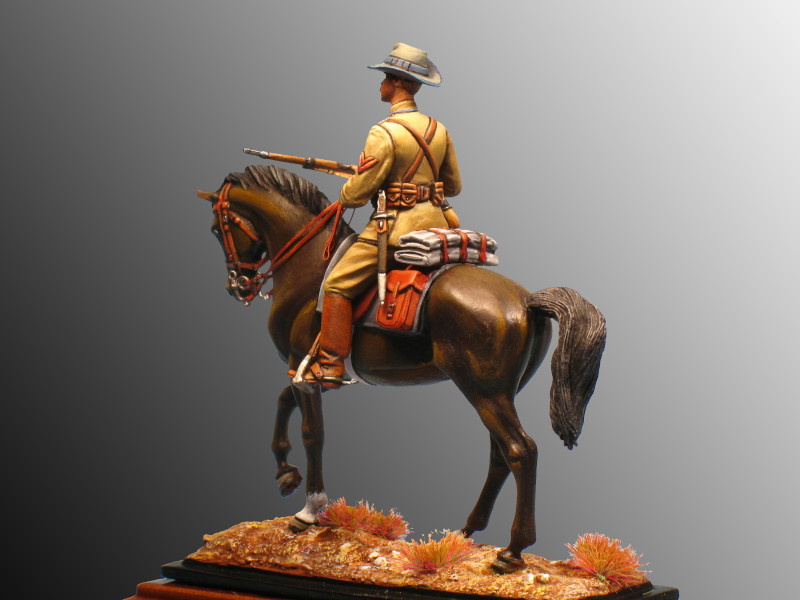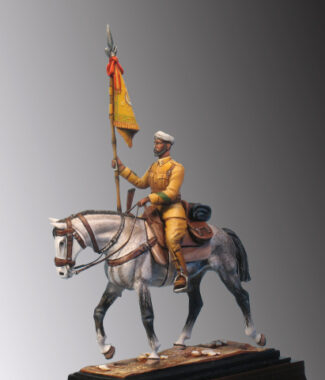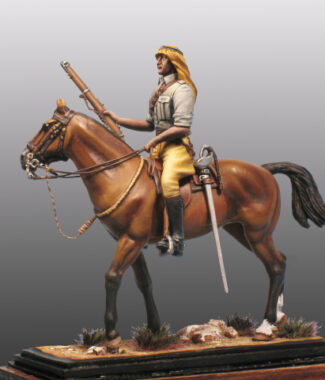You must be logged in to post a review.
Schutztruppe – German Colonial Troop – 1914
€68.00
Figure to assemble and paint
Ref.: 5 – CT
Weight: 250 grs.
Material: Metal blanco
Number of Pieces: 18
Historical Review:
GERMAN COLONIAL TROOPS – SOUTHWEST AFRICA. SERGEANT – 1914. Ref.: 6TC
Under Kaiser Wilhelm II (1888-1918), Germany attempted to expand its colonial possessions by acquiring new trade representations. This period shows a policy of enthusiastic expansion and forced rearmament, especially the Imperial Navy. The colonial movement had become an important factor in German domestic politics. In addition to the arguments presented so far, the German colonial movement now argued that the slave trade in the colonies should be combated and the indigenous peoples freed from slave traders. In the foreground, however, were questions of national prestige and self-assertion in a competition of the main colonial powers; Germany as a “newcomer” now had to claim its share.
After 1890, he was only able to acquire minor areas. In 1895, a concession was acquired in the Chinese city of Hankou and in 1899 another in the Chinese city of Tientsin. In 1897/98 Kiautschou and the Tsingtau port were leased also in China. In a 50 km semicircle around Kiautschou Bay, a neutral zone was established, in which China’s sovereignty was restricted by Germany. In addition, there were German mining and railway concessions in Shantung province. The eastern part of the previously neutral Salaga area was added to German Togo. At the same time, rule was extended within the colonies, for example in German East Africa in the kingdoms of Burundi and Rwanda. However, in the Bafut and Hehe war in 1891 also about persistent resistance between ethnic groups in the interior of Cameroon and East Africa.
The Schutztruppe (protection force) is the name given to the colonial army of the German Empire that was in operation from 1891 until 1918, when Germany lost its colonies. They were the forces responsible for maintaining public order and security in German East Africa, Cameroon and German Southwest Africa. Their duties ranged from quelling rebellions to border security to escorting expeditions. The corps was not, however, designed for national defence against external aggression.
In the military structure of the German Empire, the Schutztruppe formed an independent part under the direct supervision of the emperor with no connection to the Imperial Army or the Imperial Navy. It consisted of Germans who volunteered for colonial service and natives who were called askaris. Its control was exercised by the German Colonial Office.
By 1914 the organisation had matured considerably and by then there were three main commands of the Schutztruppe:
German East Africa: Formed by 14 companies, totalling 2,500 men, with headquarters in Dar es Salaam and numbering up to 14,000, plus porters and other labourers. It was commanded by Paul Emil von Lettow-Vorbeck and became the last German unit to surrender in the First World War.
German Southwest Africa: Formed by 12 cavalry squadrons, totalling 1500 men, the vast majority of them German. The 7th Squadron, stationed in the northern region of the colony, used camels. In the units in this territory, relations between Germans and Africans deteriorated to the point that some entire units revolted and had to be relieved. The natives ceased serving in the Schutztruppe as they began to join the Boers in continuing their fight against Britain.
The khaki tropical uniforms were first worn by the Schutztruppe’s predecessor, the Truppe Des Reichs-Kommissars in Southwest Africa from 1891. Several modifications were made to the tunic before the regulation of 19 November 1896 introduced a new single uniform in khaki for the Schutztruppe of Southwest Africa, East Africa and Cameroon.
The figure is based on a photograph of a non-commissioned officer of the Schutztruppe in South Africa taken while escorting South African prisoners of war captured at the Battle of Sandfontein in 1914. It is the typical appearance of the South African Schutztruppe before and during the First World War in hot weather. He wears the Feldrock and standard khaki trousers and Südwester hat. Note the two chevrons on his upper left arm denoting his sergeant rank.He wears the all-in-one brown leather belt (incorporating belt, shoulder straps, ammunition pouches, canteen holder and bayonet buckler). His rifle is the Mauser G88 with the S71/84 bayonet. He wears natural brown leather riding boots.
As for the horse, it carries the third model of equipment adopted by the mounted troops of the Schutztruppe with buckled ammunition pouches, rump briefcase and rifle pouch.








Reviews
There are no reviews yet.